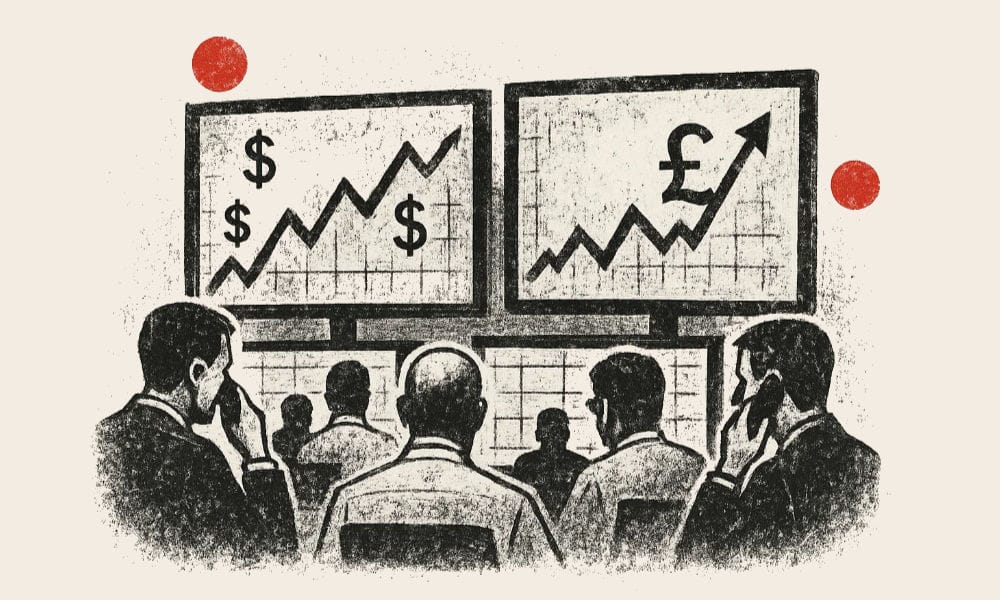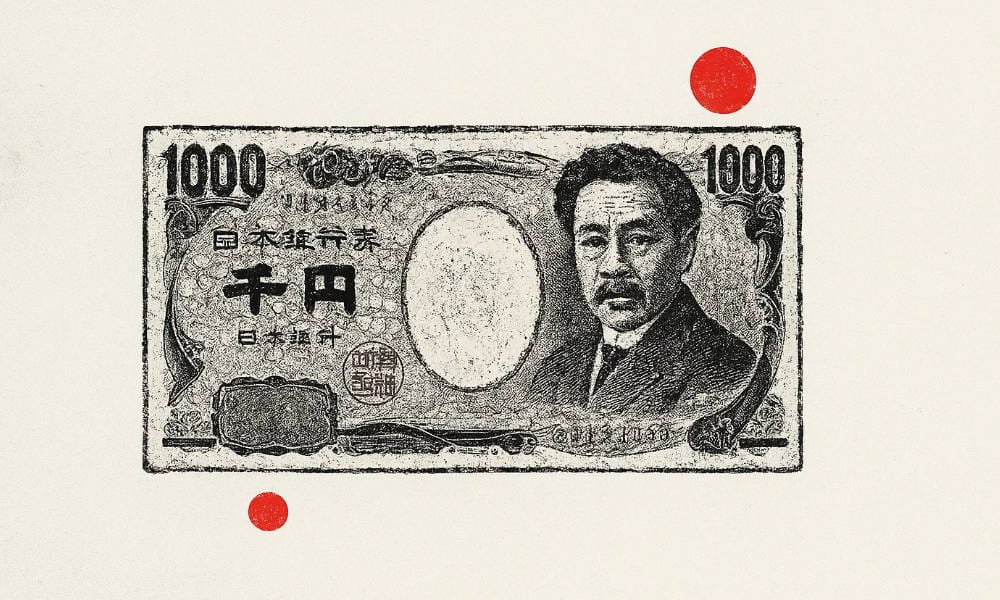What Is Forex? How the Foreign Exchange Market Works
Forex, short for Foreign Exchange, is the world’s largest and most liquid market where traders buy and sell currencies.

If you’ve ever travelled abroad or bought something in a different currency, you’ve already taken part in the foreign exchange market – better known as Forex. But beyond airport kiosks and holiday money, Forex is also the largest and most liquid financial market in the world.
Every day, trillions of dollars’ worth of currencies are traded globally. For many, Forex trading offers a chance to profit from currency price changes. For others, it’s simply how global business gets done.
How Does Forex Work?
You are not here to find out how to exchange your travel money – that’s for sure, you are here to learn how the forex market works behind the scenes, where banks, hedge funds and traders move trillions of dollars every single day.
Forex works by trading one currency for another. Every trade involves a pair, like the pound against the dollar or the euro against the yen. You are not buying a physical asset, you are simply speculating on whether one currency will strengthen or weaken against another.
The market itself has no central exchange like the stock market. It operates electronically through a global network of banks, financial institutions, brokers and traders. Forex trades around the clock, five days a week. It kicks off on Monday morning in Asia and keeps going through European and American sessions before closing late on Friday in New York.
Most of the activity in forex comes from banks, corporations and financial institutions exchanging currencies for business and investment purposes. A smaller share comes from speculators, mainly professional traders and hedge funds, who trade based on economic data, interest rates and market trends.
Why Do People Trade Forex?
Not everyone trades forex for the same reason. Retail traders, businesses, institutions and speculators all approach the market differently.
Retail traders are everyday people. Forex appeals to them because it is cheap to start, unlike stocks that often require larger upfront investments. They can use leverage to control bigger positions with a small deposit and access the market twenty-four hours a day during the trading week. This combination of low entry cost, high flexibility and constant market access is why so many choose forex over other assets.
Businesses trade forex because they have to. Any company that buys from abroad or sells overseas needs to manage currency risk. One bad exchange rate move can wipe out their profits. Companies use forex to hedge, locking in costs or revenues to avoid surprises.
Institutional traders, like banks and hedge funds, are in a different league. They use forex to profit from short-term trends, manage massive international portfolios, or execute strategies tied to interest rates and global economics. Their access to research, liquidity and low trading costs makes their game completely different from what retail traders experience.
Professional speculators, hedge funds, proprietary trading desks and deep-pocketed investors trade forex for one reason, opportunity. They follow fundamentals, track central banks and move fast when market conditions change. Their trades are large, deliberate and based on hard data, not gut feeling.

Key Features of Forex Trading
Forex trading stands apart from other markets in a few clear ways. First, it moves at a scale few can match – trillions of dollars change hands every day. This sheer size means there’s almost always someone ready to buy or sell, making forex the most liquid market on the planet. You won’t get stuck waiting for a buyer or seller
The market never sleeps during the working week. Trading kicks off in Asia, then moves to Europe, and finishes with the US session. Some periods are busier, London and New York hours see the most action and the biggest price moves.
The most popular pairsthe involve the US dollar, like GBP/USD or EUR/USD, known as ‘majors’. These ‘major’ pairs tend to have the tightest spreads, meaning the difference between buying and selling prices is small, which helps keep trading costs down. Beyond majors, there are ‘minor’ pairs that don’t involve the dollar and ‘exotic’ pairs that combine a major currency with one from a smaller or emerging economy.
One feature that most traders lean on is leverage. This lets you control a position much larger than your initial investment, increasing the potential reward. For instance, with 1% margin, you can manage $10,000 of currency with just $100. This power is a big reason why forex trading attracts so many – it stretches what you can do with your capital.
Forex Volatility and Risk Factors
Forex is known for its unpredictable swings. Volatility is baked into the market because currency values respond quickly to all kinds of news, economic reports, central bank announcements, political developments, and even unexpected headlines.
Some currency pairs are more volatile than others. Exotic pairs, for example, often see bigger price jumps because they trade less frequently and have lower liquidity. Meanwhile, major pairs like EUR/USD or GBP/USD tend to be steadier but can still move sharply around key events.
Volatility is what gives forex its energy, but it also brings risk. Prices can move against a trader very fast. This is why understanding what drives the market is very important, otherwise, you’re gambling blind.
Market gaps can happen too, when prices jump over levels between trading sessions, leaving open positions exposed.
Finally, the forex market’s 24-hour nature means events can unfold while you’re not watching, especially overnight or during quieter hours. This can catch traders off guard.
Is Forex Trading Profitable?
Forex trading can be profitable but the reality is most people lose. The traders who make consistent profits are usually those with experience and a deep understanding of how the market works. They know how to manage positions, they understand when to trade and more importantly when to sit out.
The problem is retail traders are often sold the dream of quick profits without understanding what they are walking into. Many get lured in by flashy adverts or social media influencers. They jump in too soon, chase after every price movement, and end up losing their money within weeks or months.
The ones who do make money treat trading like a job rather than a hobby. They have a clear strategy, they follow economic events, and they manage their risk properly. Even then, they accept there will be losing trades along the way and focus on staying consistent over time.
Forex is not a place for easy wins. It is a highly competitive market where professionals, institutions and algorithms all have the edge over the average retail trader. Profitable trading is possible but it is reserved for those willing to put in serious work, treat it with respect and build real skill.
How to Start Forex Trading
If you want to start forex trading the first step is to understand exactly what you are getting into. This is a market that moves fast and catches people off guard so rushing in without preparation is a quick way to fail.
Start by learning how forex works. Understand what moves currency prices and how to read a price chart. Focus on major currency pairs first because they are the most liquid and tend to have lower costs for beginners. Learn the basics of trading platforms since most brokers offer free demo accounts where you can practise without risking real money.
Once you have a grip on the fundamentals you need to choose a regulated broker. Look for a broker that is authorised by proper financial authorities, offers fair trading conditions and does not bury you in hidden fees. Open a demo account and spend time testing how the platform works before committing real funds.
Next comes building a strategy. Random trading is the fastest way to lose money. Pick a simple method to start, such as a strategy or basic price patterns. Keep it simple and focus on learning how to stick to a plan.
Start small when you move to live trading. Do not throw in big sums straight away. Use low position sizes and pay attention to how you react when real money is involved. Emotional control is just as important as strategy.
Finally, treat forex trading as a long-term process. Your goal is not to get rich in a week but to learn how to make consistent decisions over time. Review your trades, track your performance and improve step by step. Those who stay disciplined and build real experience have the best chance of success.
Bottom Line
Forex is a fast-moving market that attracts people for good reason. It is liquid, active around the clock, and full of opportunity. But it is also full of traps for those who jump in without proper preparation.
Most retail traders lose because they underestimate how hard it is to trade consistently. The few who succeed do so by building real skill, sticking to a strategy, and treating trading like a serious profession rather than a side bet.
If you are thinking about trading forex, go in with your eyes open. Learn properly, practise without risking money, and understand what moves the market before you commit real capital. The rewards are there but they do not come easy.

